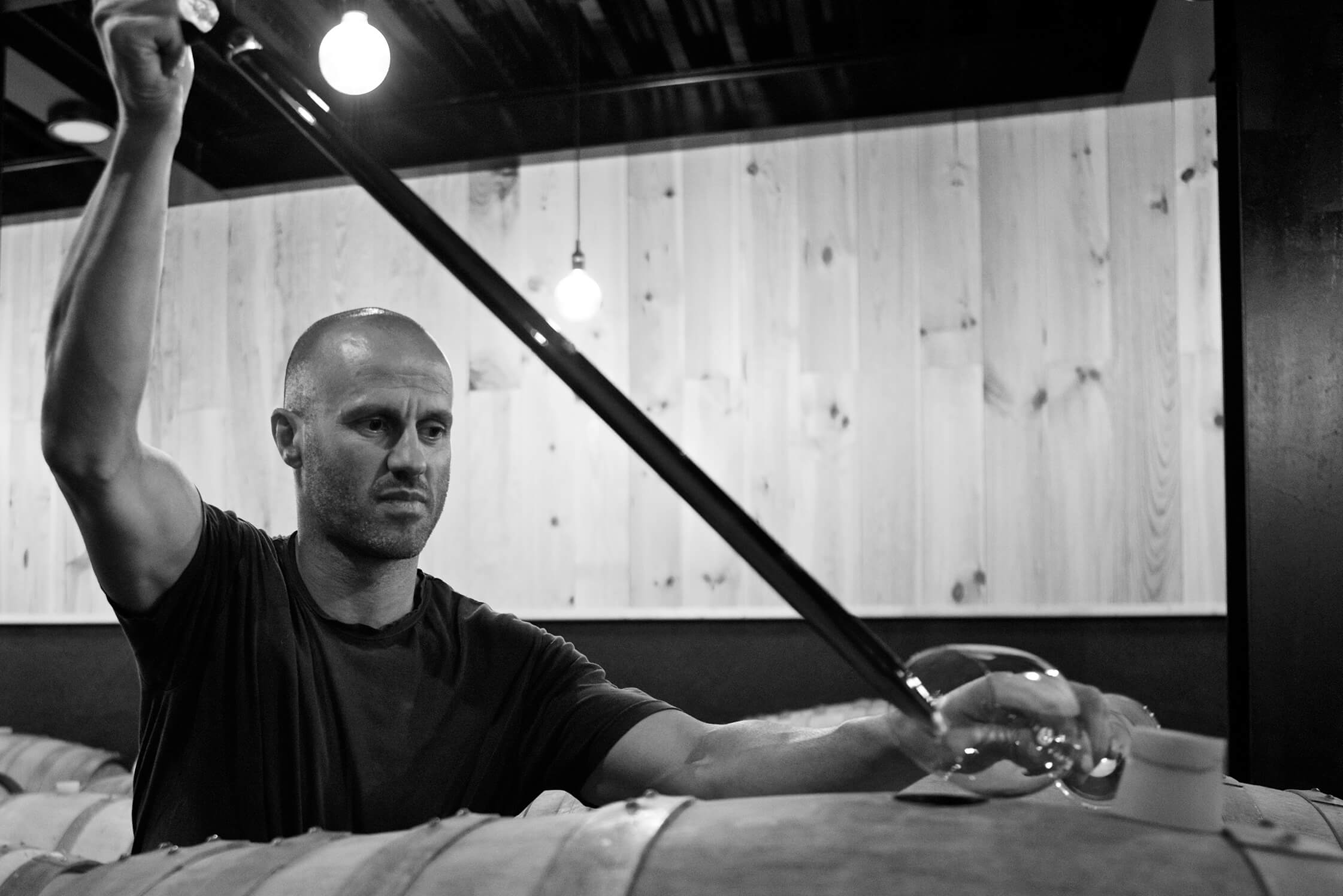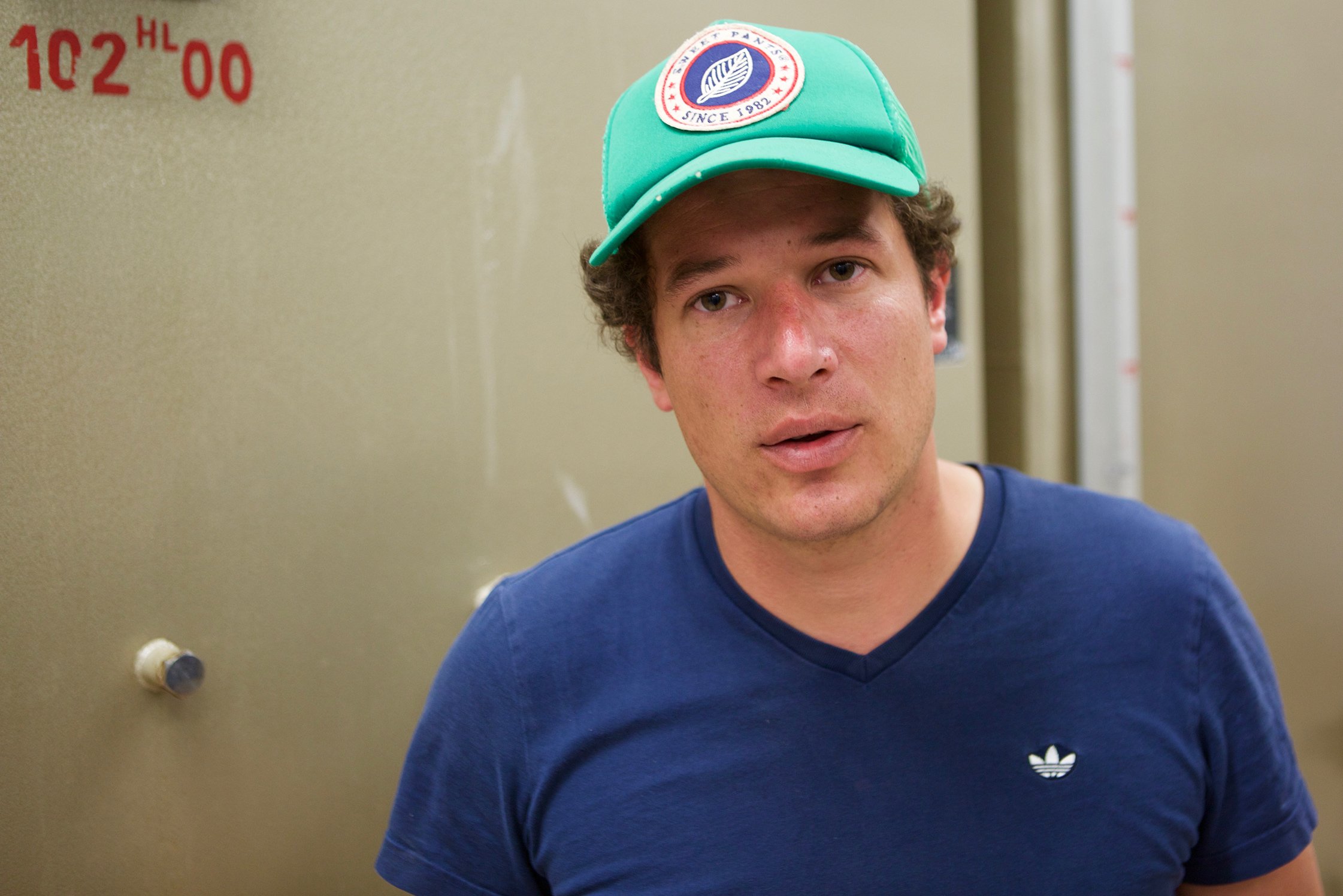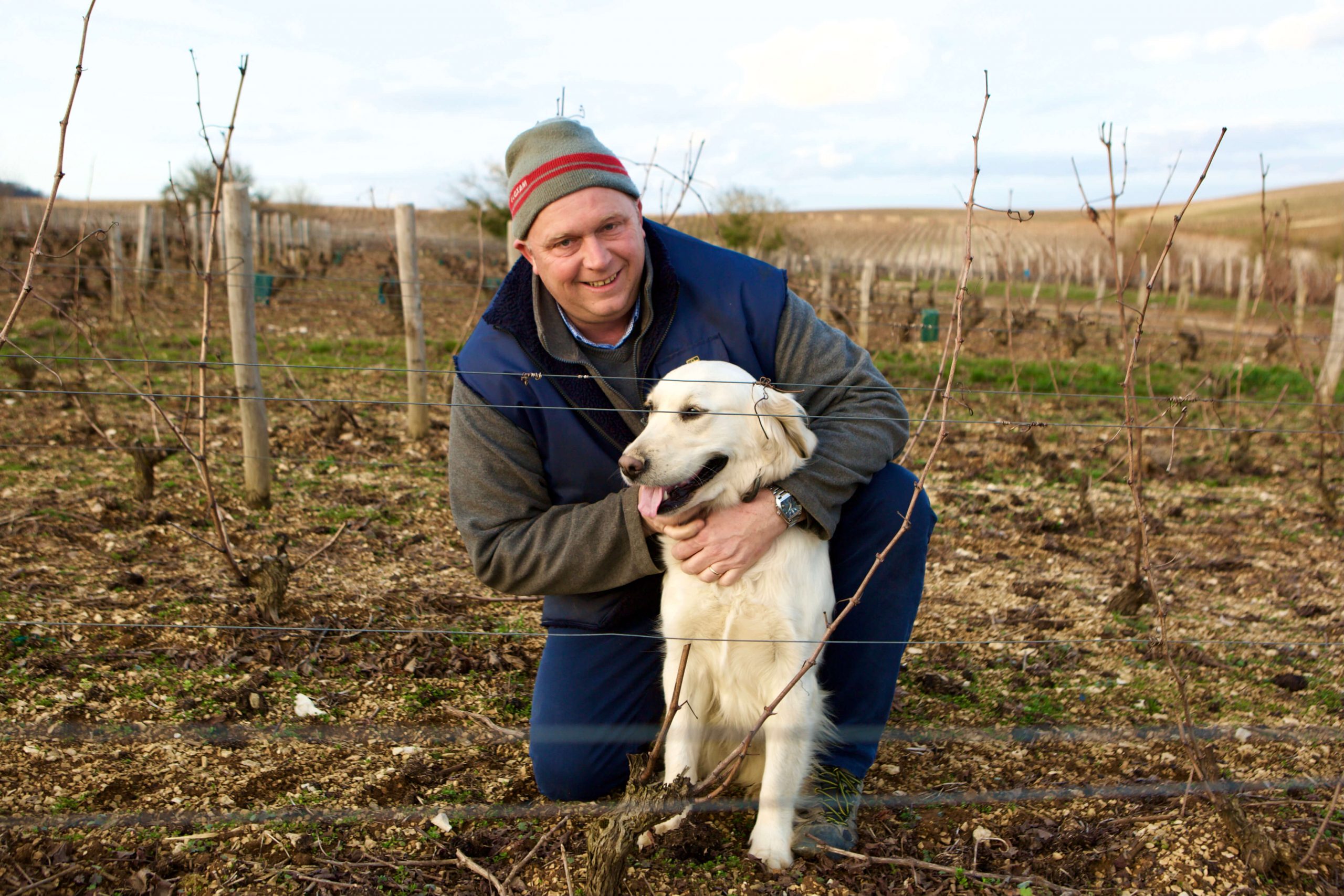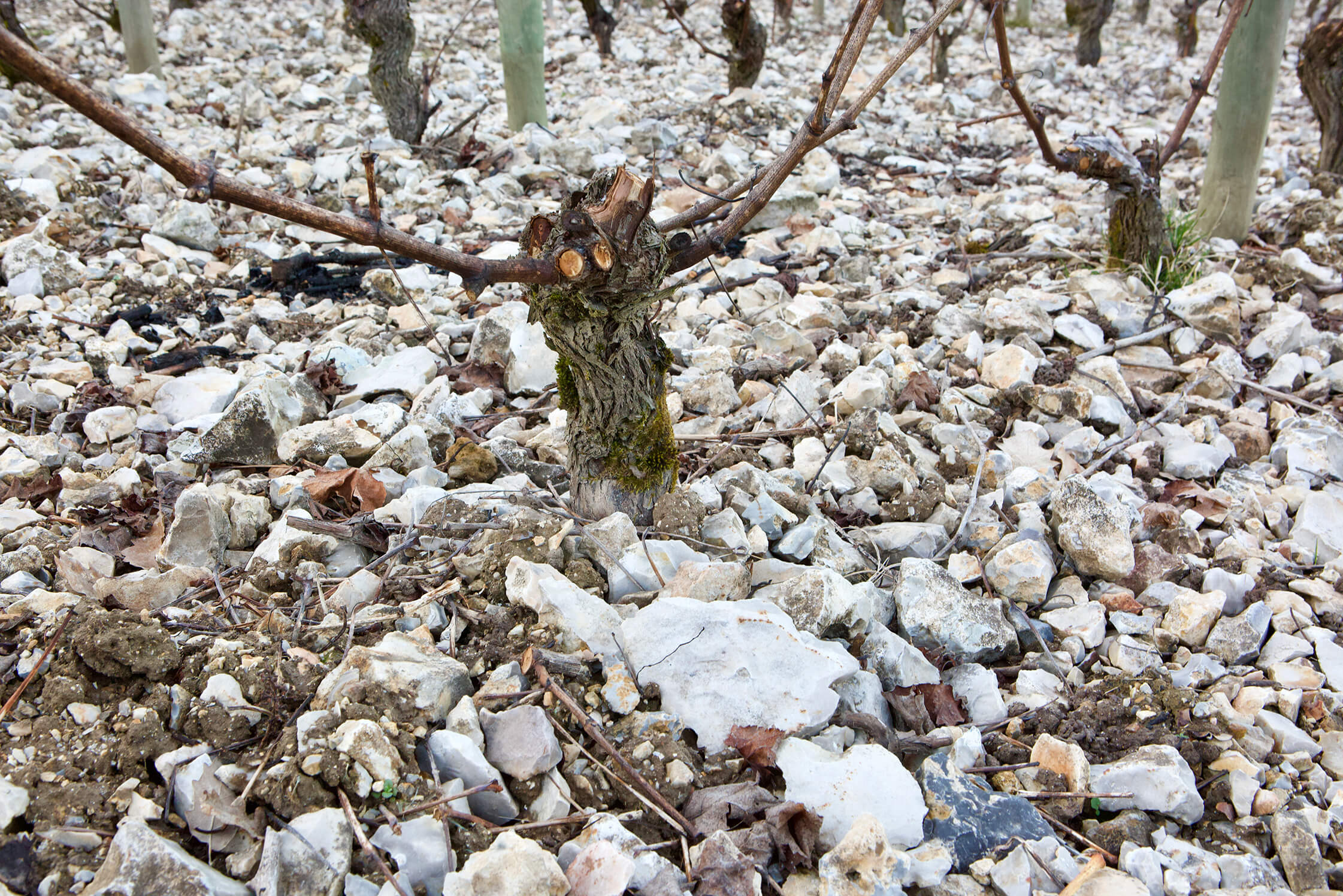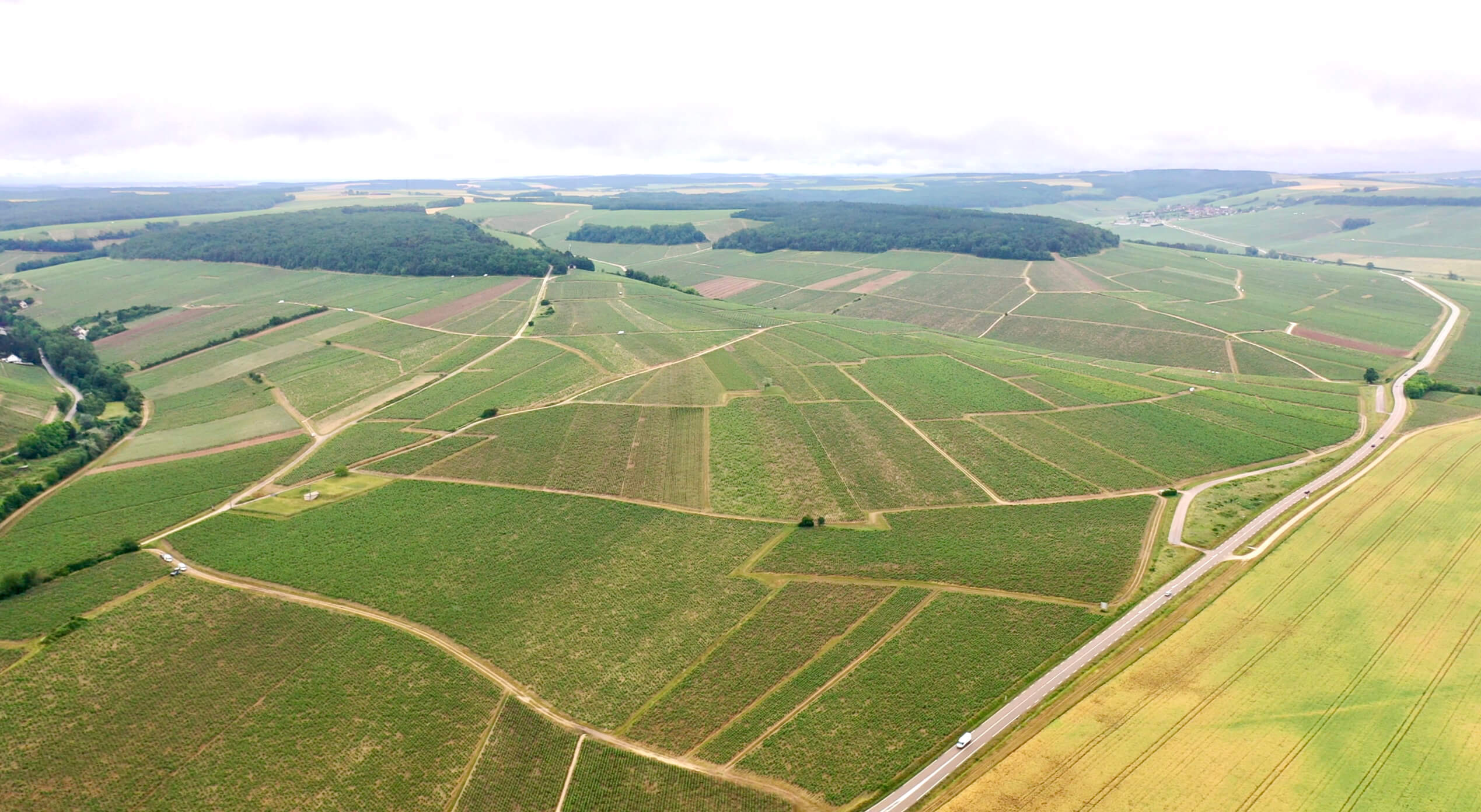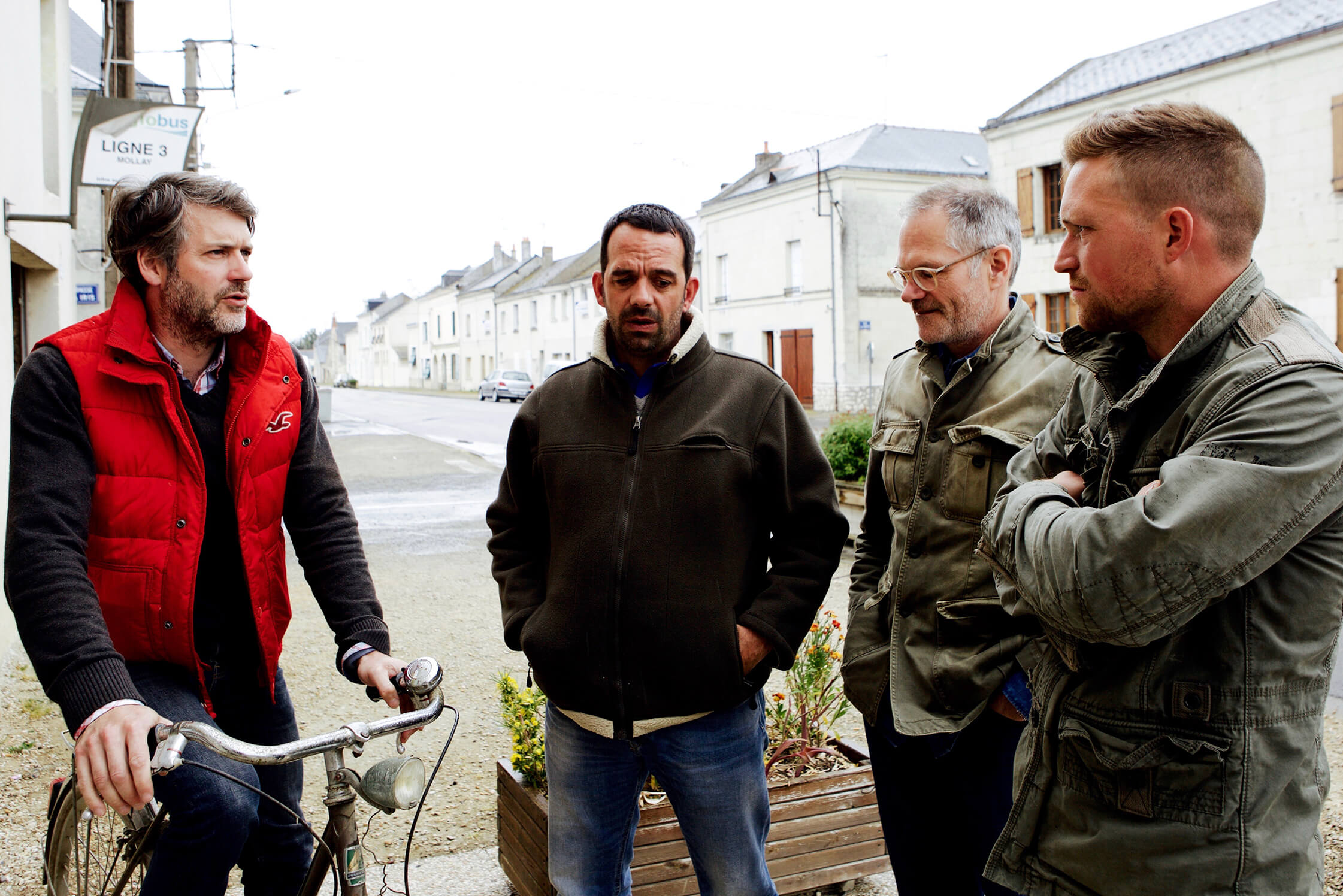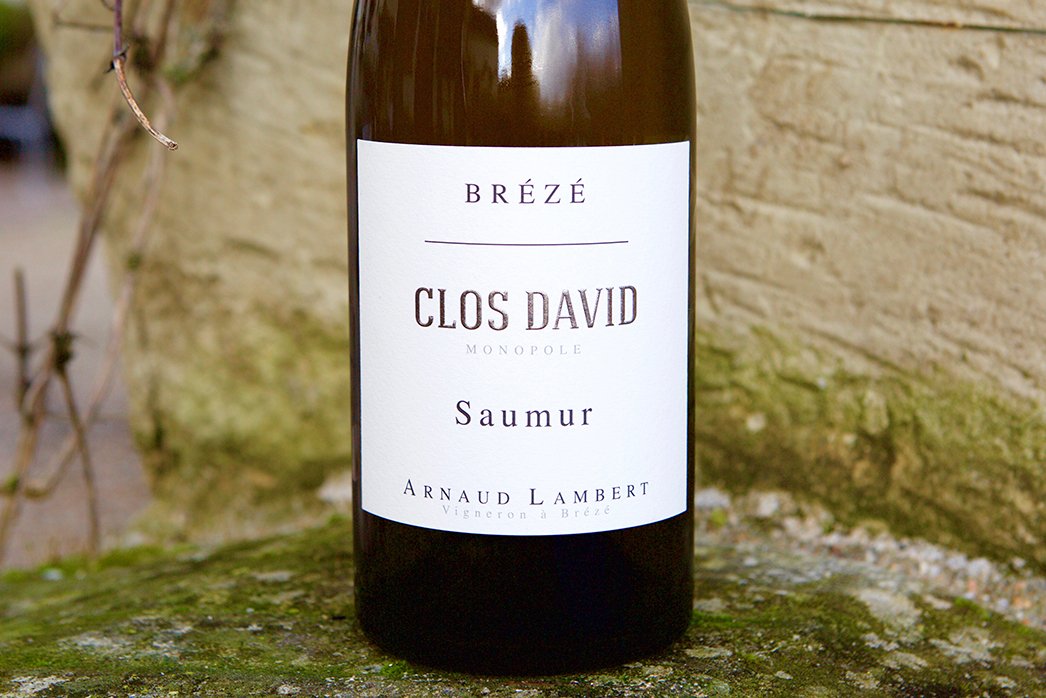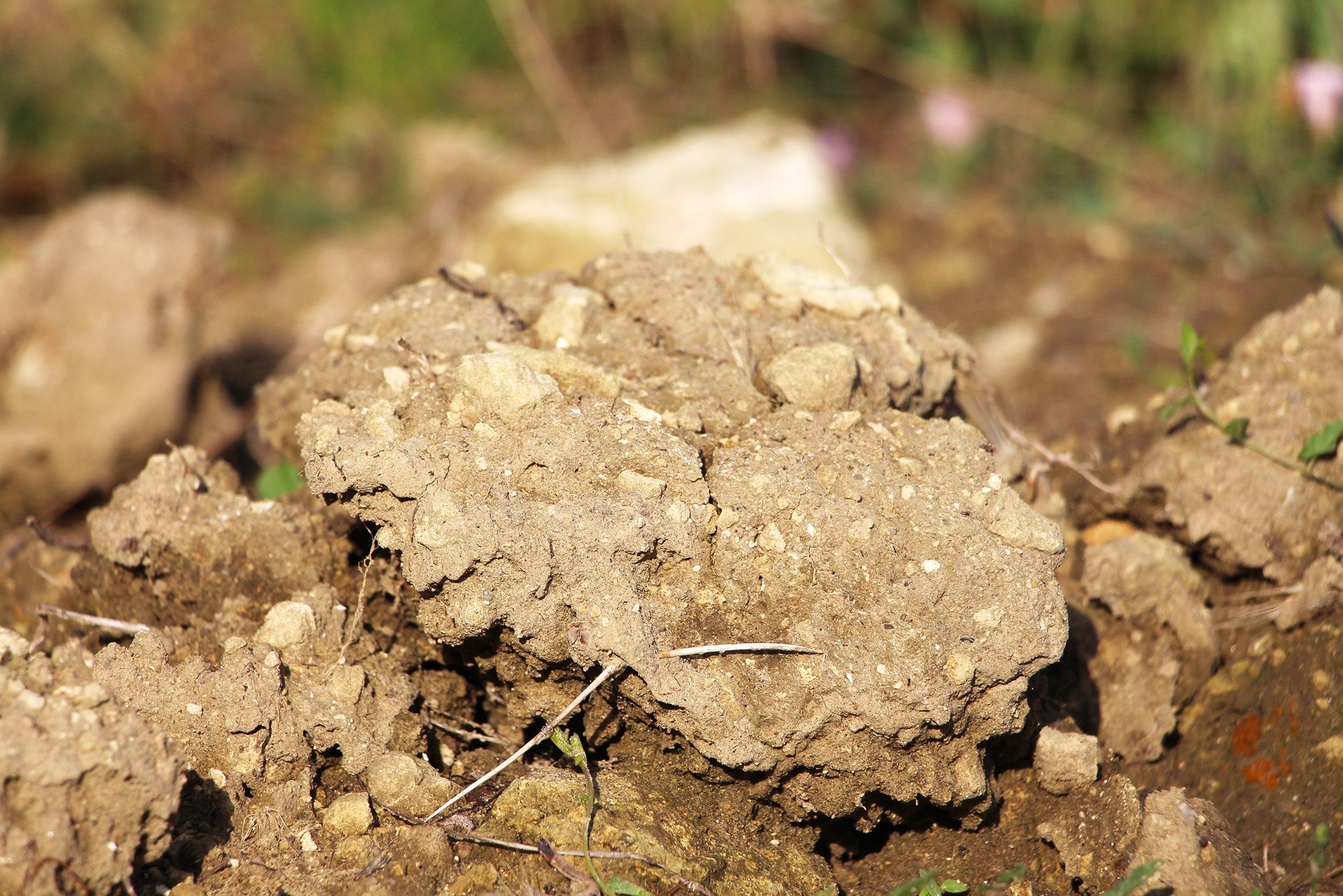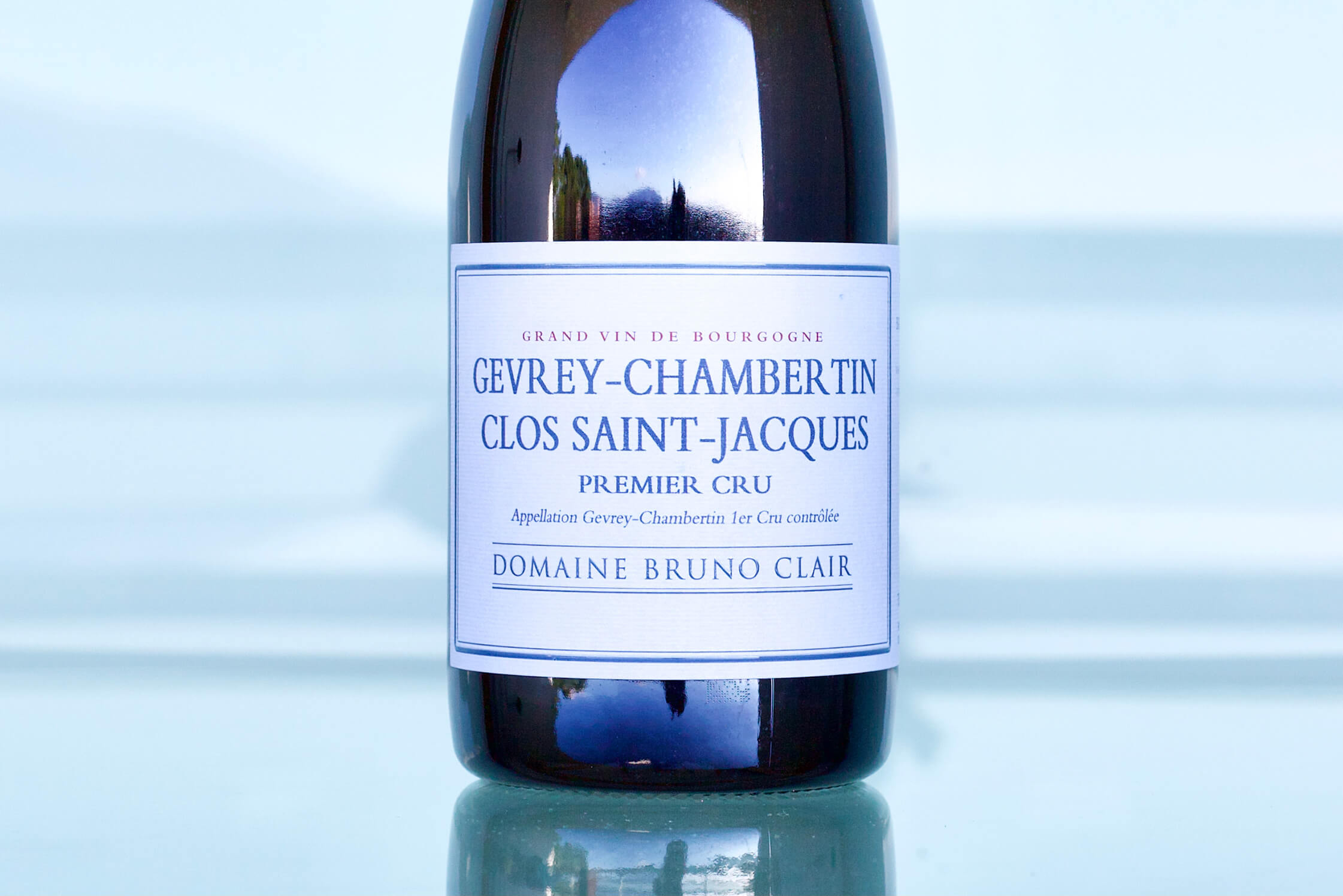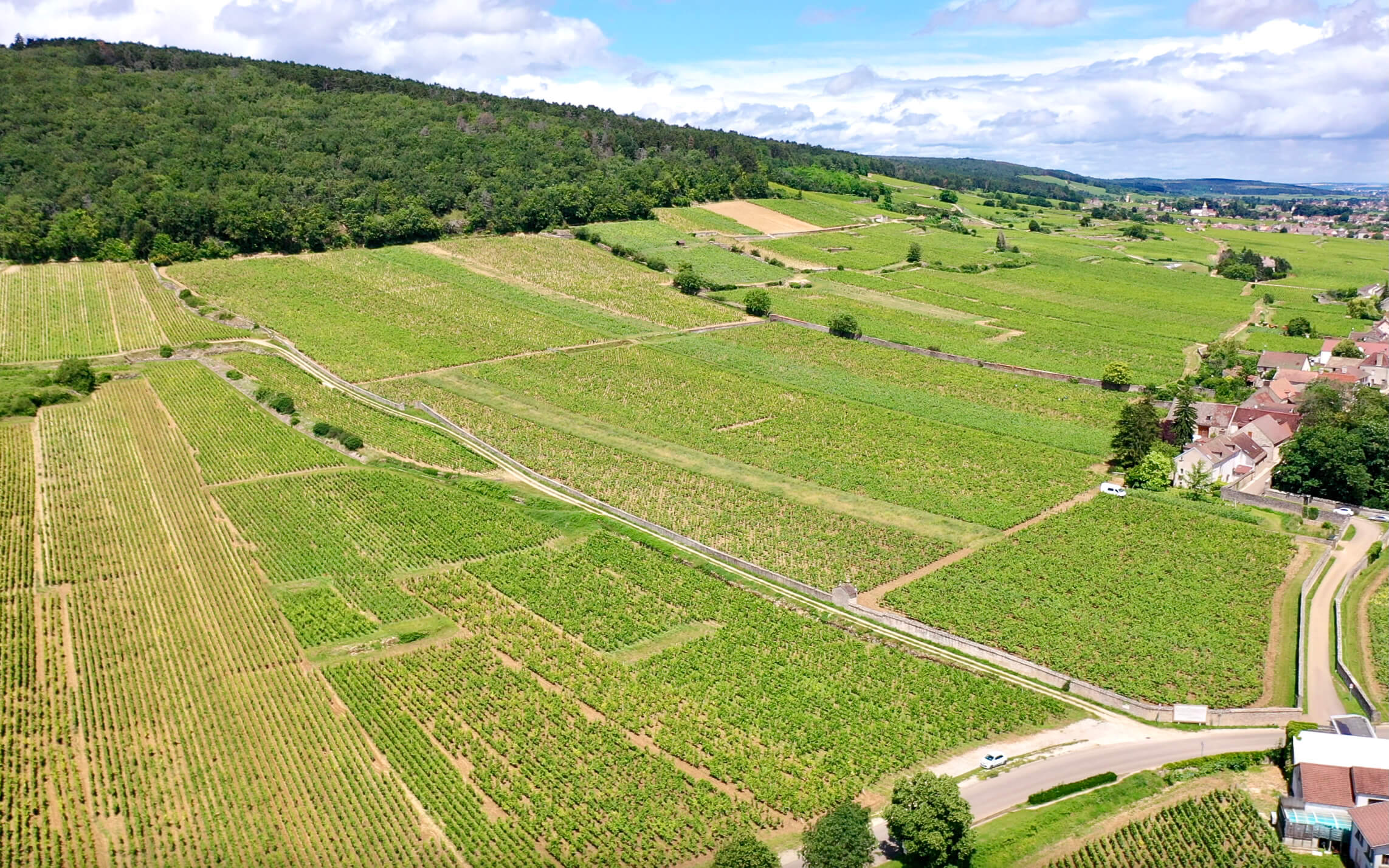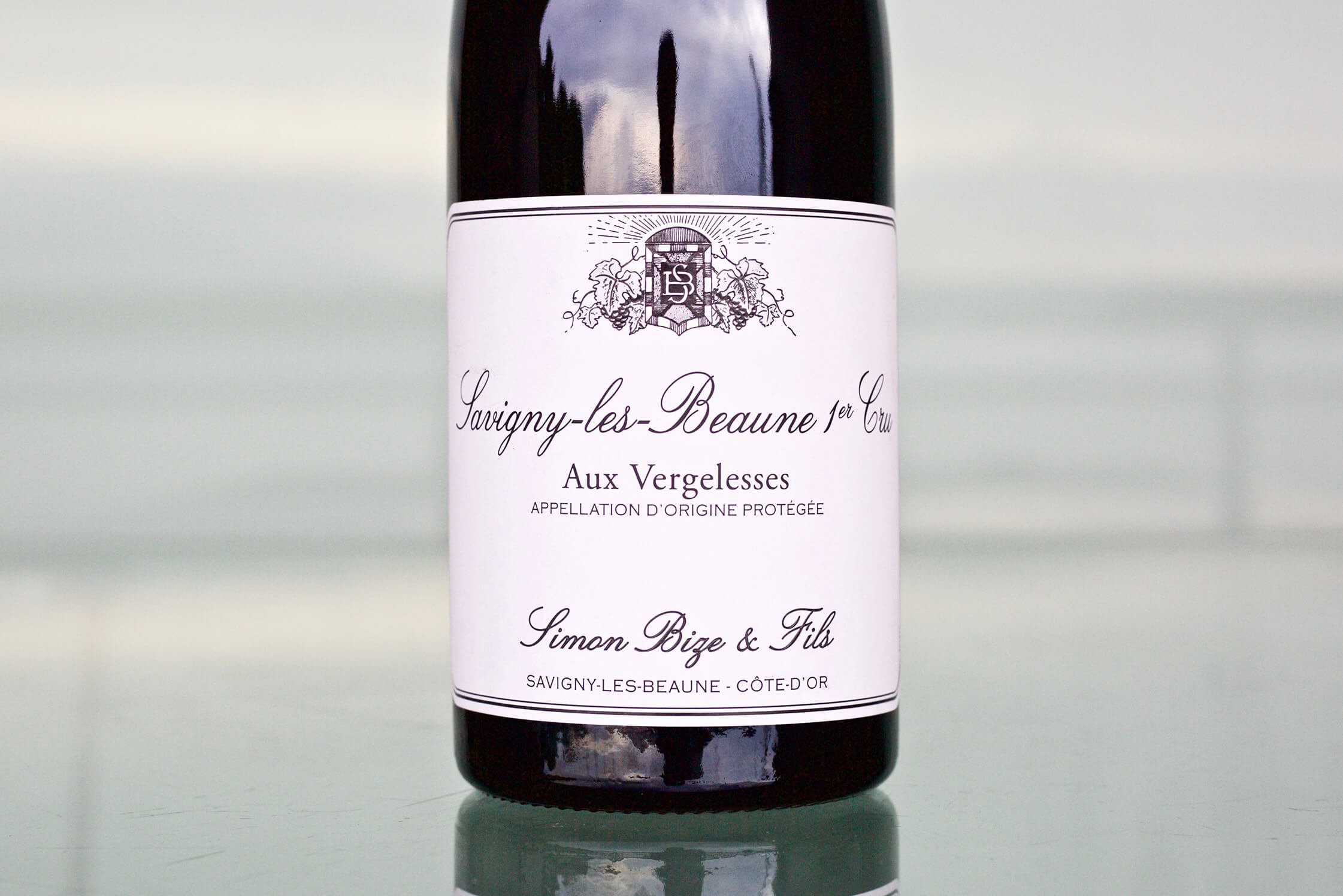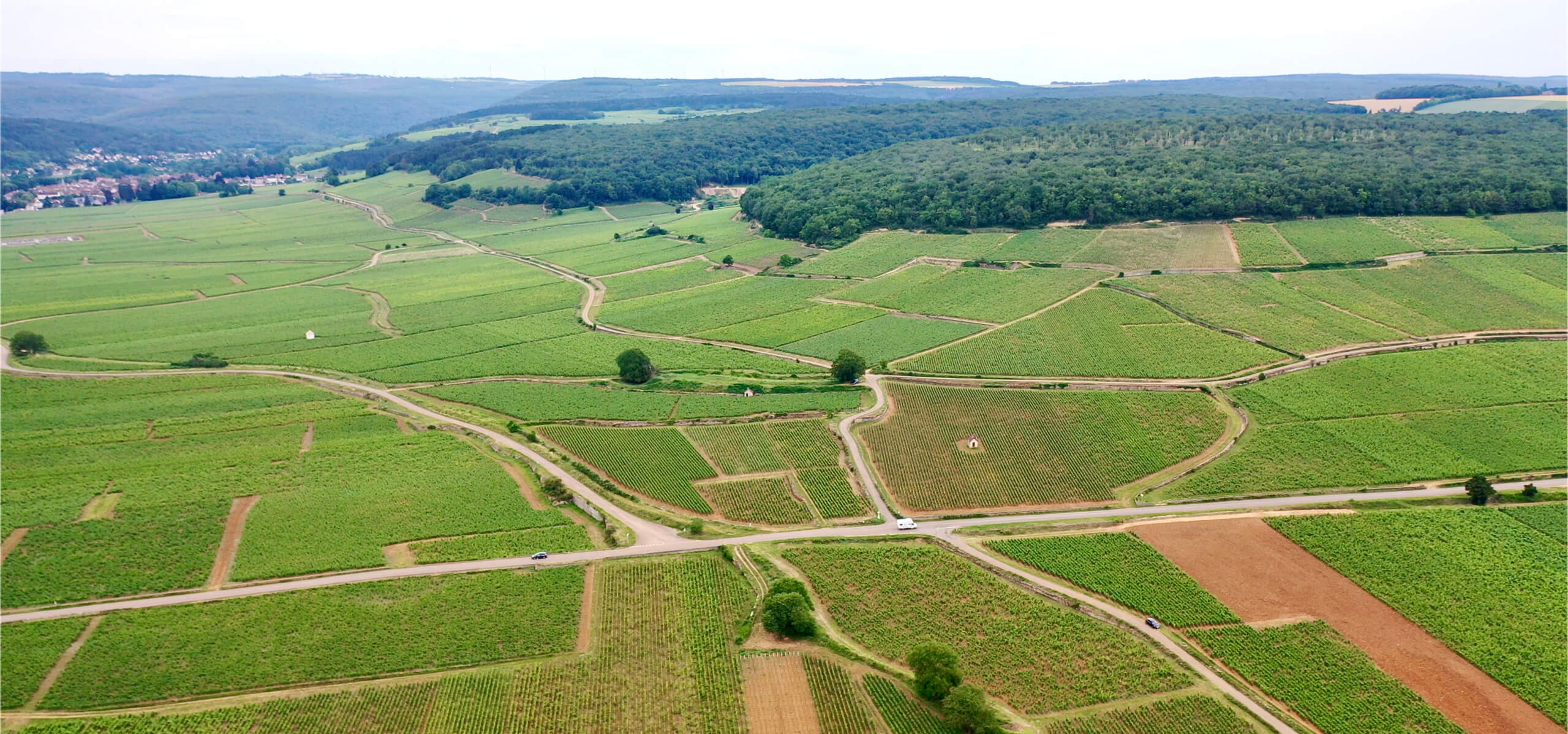
It seems that just about everyone I know who didn’t get Covid prior to the recent holiday season has done so since, but somehow my wife and I have successfully evaded it despite an extensive pre-holiday tour around California to say hello to as many of our friends and customers (many of whom were also very good friends, along with some I hope will be falling into that category). We again wish all of you the best of luck with your health from our homebase of Portugal. Keep drinking good wine! I think it helps…
We have a lot to talk about this month, so let’s dive in!
First on our list of arriving producers is the new darling of Wine Advocate critic Luis Gutierrez: Fazenda Prádio, from Ribera Sacra, run by former professional Spanish fútboler, Xabi Soeanes. We did a very quiet opening with his top red wine from 2018, Pacio, but with only 20 cases to spread around it was hard to justify a big promotion; we’ve been waiting for the 2019s to arrive, because we’re getting a lot more of them and we’re really excited about it!
We’ll start with a snapshot of what’s done in the cellar because it’s the same for all the reds, and it’s very straightforward. Fermentations are natural and take place in granite lagars (rock vats) with varying capacities for about seven to ten days. Most of the barrels used for aging are 500L, old French oak and the élevage usually runs about eight months, simple production methods that showcase this architecturally terraced granite and schist terroir that overlooks the Río Miño.
The first wine in the range is made of Mencía, the most famous grape in Ribeira Sacra. It’s this grape’s approachable nature that makes it broadly appealing and Prádio’s rendition has a great deal more layering and complexity than the typical Mencía due to its very shallow topsoil composed entirely of the granite and schist just centimeters below the surface. Prádio has just a few hectares and they’re shooting for the highest quality with this wine, which makes its modest price quite a deal.
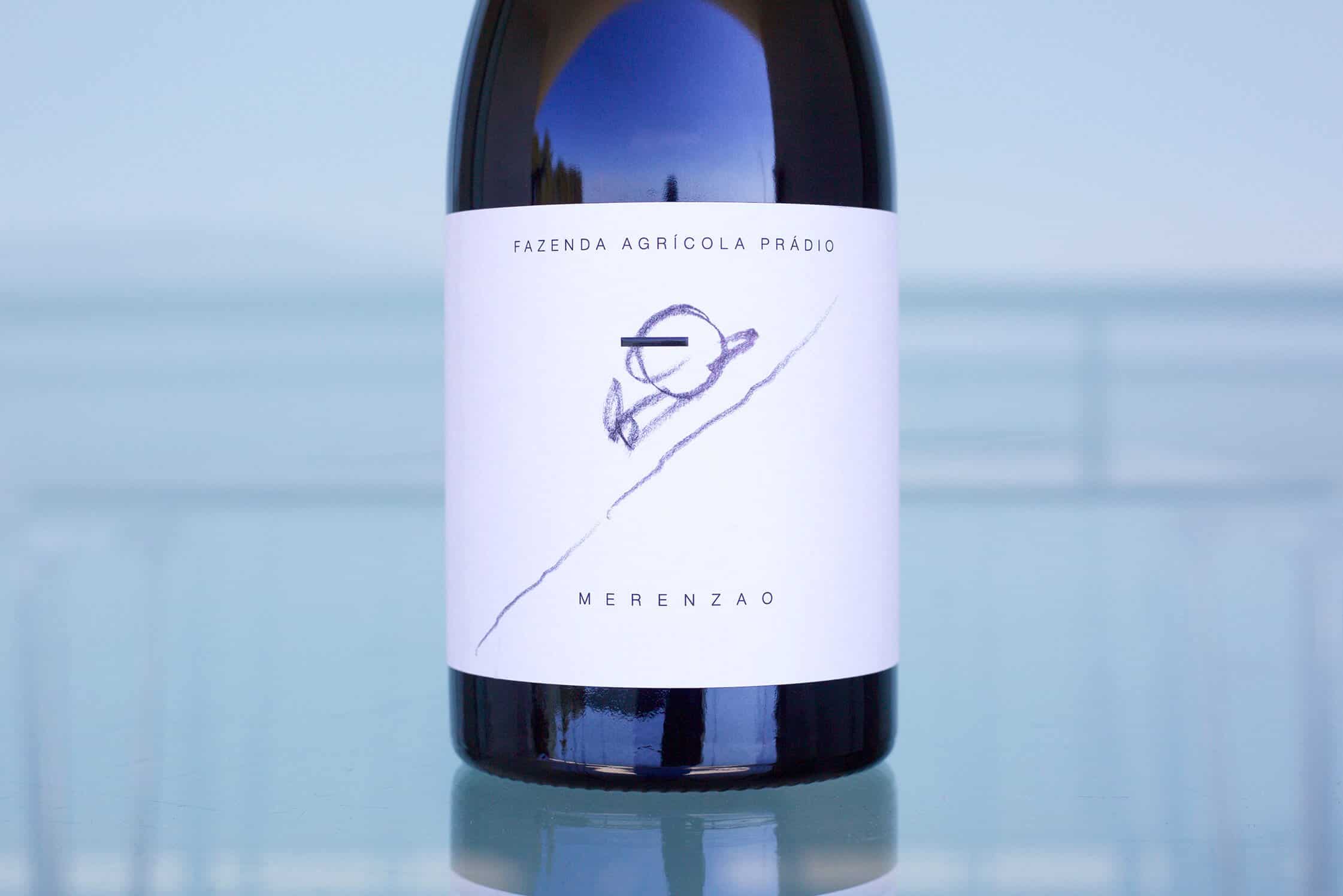
Right now they only have nine hundred vines of Merenzao, which produces a very sensual, aromatic wine with a fine mouthfeel of good natural acidity and little in the way of tannins. In France’s Jura, Merenzao is known as Trousseau. Elsewhere in Northwest Iberia it seems to have a hundred synonyms and turns up in many unexpected places. This wine is delicious and perhaps the most aromatic of the range. The only challenge is that my wife is so fond of it, which makes it hard to keep around the house when they produce so little of it. In the Jura, this grape is grown mostly on limestone terroirs which bring a broad palate feel and roundness compared to the finely etched lines of striking mineral textures imposed by these acidic soil terroirs. Once you taste it you’ll agree that the world would be a better and kinder place if everyone drank more Merenzao.
Another fabulous grape that is seemingly only found in Northwest Iberia is one of my latest obsessions, Brancellao. Xabi has three thousand vines but this variety produces a much smaller yield than most, perhaps due to its open cluster shape and wider node spacing on the shoots. Its skin color is very pale and the wines take on very little color and tannin. Its winning attributes are its fresh acidity and beguiling-but-delicate aromas of fresh red fruits and soft spice notes. Xabi believes that this is one of the most important grapes for the area, and I totally agree.
One of Galicia’s most untamed and perhaps most promising red varieties (in my opinion) is Caíño Longo. Prádio’s version of the variety combines all the elements of this truly great grape: good structure with its exuberant acidity and medium tannins, a wide range of aromatic and palate complexities, and that sort of inexplicable nobility and extra aromatic and palate dimensions shared by the greatest wine grapes of the world. The challenge for each grower is to break Caíño Longo’s acidity/phenolic ripeness code. The acidity can be monstrous if not picked perfectly, and if picked a little late, much of its high-toned red fruit and floral characteristics can quickly go to a more rustic side—a true asset when in balance with other fresher characteristics.
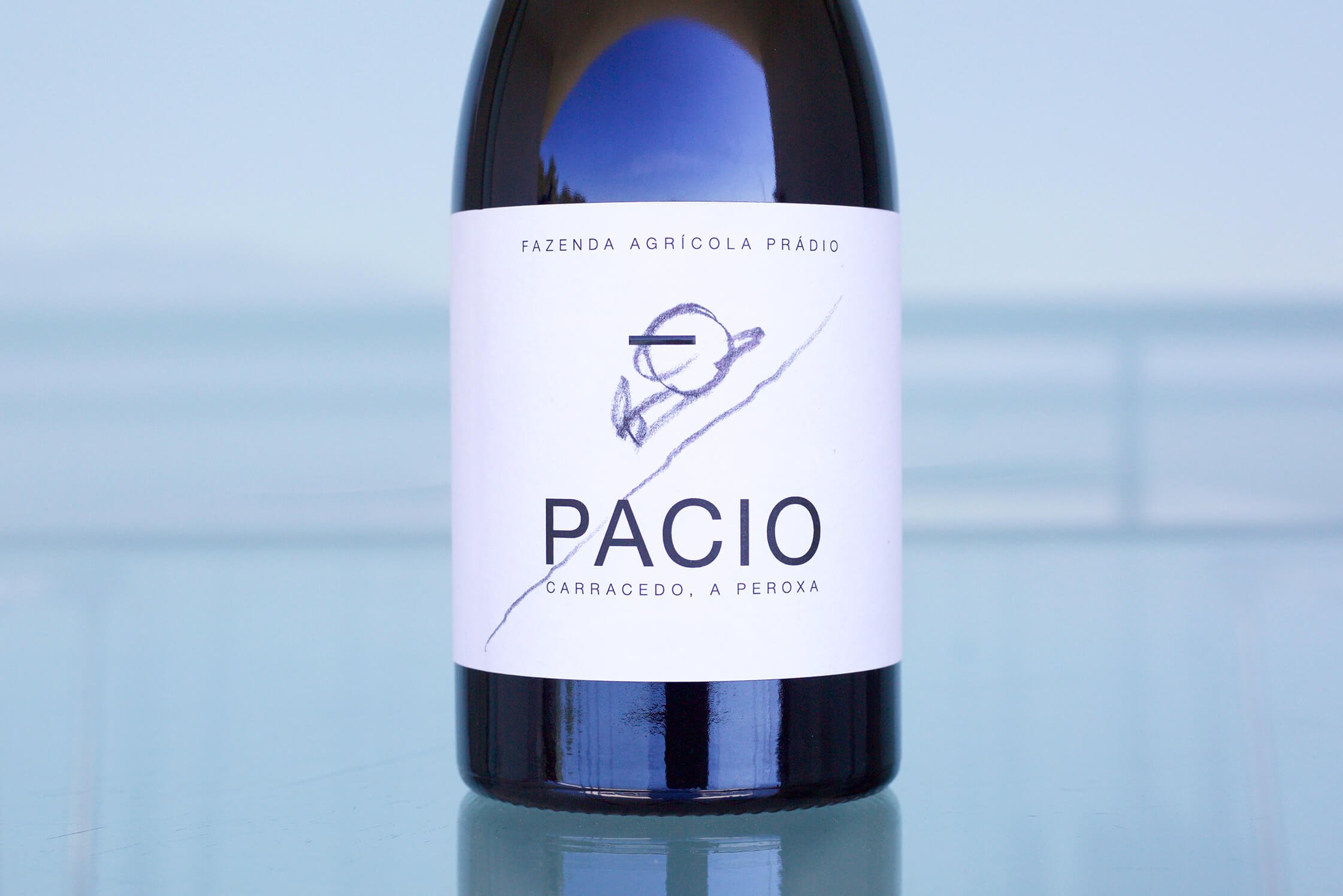
Xabi believes that his Pacio Tinto, a calculated blend of all the red grapes, is the most complete wine in the range, and I might agree. While they have some single-varietal wines, his strong belief (shared by almost every winegrower in Ribeira Sacra) is that the sum of multiple parts make a better wine than single varietal bottlings. This is also a regional historical perspective, and it is due to the variability of the indigenous grapes in Galicia that seem to be exceedingly influenced by each season and furthermore by the great diversity of bedrock and soil types, aspects, altitudes, etc, of each individual vineyard. When one grape on the farm struggles, there are others that thrive. This is surely part of the reason the grapes of Galicia (and in much of Portugal) are so commonly blended. Indeed, they are fascinating on their own, but when blended together the dimensions are perhaps more subtle while the entire breadth of the wine is magnified. Pacio has it all and nails all the facets of palate and aroma. If you have each of the single-varietal wines before drinking this one, you will see how they harmonize together.
Arriving this month are wines from regions and producers that everybody wants. We can never seem to get enough to keep up with demand in these categories without momentary holes in continuity along the way. And while we usually have very solid allocations from each of these producers, don’t wait to get ahead of the game on these because they tend to disappear relatively quickly.
There was such a massive shortage of Champagne over the holidays! I was in California for a visit and you couldn’t even find the usually ubiquitous Veuve-Clicquot Yellow Label, even at Ralphs! (Not that any of us were looking to buy that…) But it wasn’t because Champagne’s stocks have run dry; it’s because those darn freight delays just won’t go away. But we cut a deal with the marvelous and young Maxime Ponson to bring in a massive shipment that was dispatched in August in hopes that it would make it to California for the holidays. Yes, you read that right: we ordered it in August, thinking that was enough time to receive it before Thanksgiving… It didn’t end up arriving, but it’s doing so now!
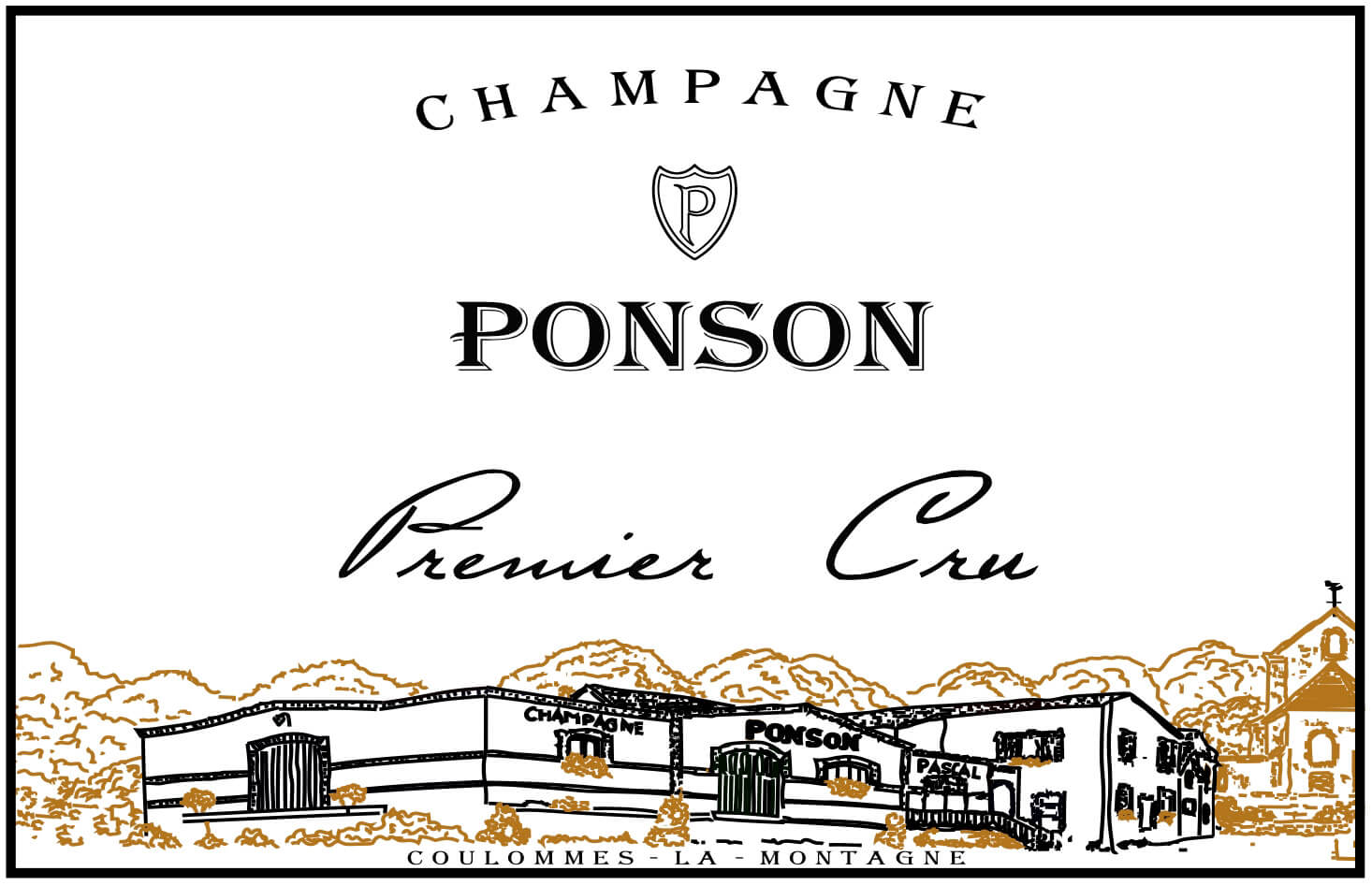
The new arrival of Maxime Ponson’s Extra Brut “Premier Cru” Champagne (dosage 7g/L) comes from his family’s organically farmed vineyards in La Petite Montagne, a subregion of Champagne’s Montagne de Reims, located west of Reims, the region’s capital. La Petite Montagne is home to some regional luminaries and top talents, like Prévost, Brochet, Savart, and Egly-Ouriet. They tend to seven different communes and only on premier cru (1er Cru) sites where they have seventy parcels that make up 13.5 hectares, the oldest of which being seventy years old and the youngest just recently planted. The bedrock here is chalk which Maxime says is softer than the chalk found further south on the Côte des Blancs because it’s more of a tuffeau, an extremely porous, sand-rich, calcium carbonate rock, similar to what is found in Saumur and other wine regions of the middle Loire Valley. The wine is a blend of 70% Pinot Meunier and the rest equal parts Pinot Noir and Chardonnay. Best to get on the train soon because the shipping delays continue…
Another wine that has been in very short supply due to freight challenges and is always in a high demand is Sancerre. François Crochet’s 2019 single cru whites are finally arriving, and despite the overall riper character of the vintage (a perfect year for those of you who like a little less green in your Sauvignon Blanc), we can always count on François to be the one who still finds the freshness with his very early picking—something he’s put into practice since he took over from his father.
From most elegant to most powerful of Crochet’s range, we start with Le Petit Chemarin. This wine has quickly moved to the top of the range for me based solely on its bright mineral characteristics and elevated aromas—a profile that has yet to be exhausted within my general view of wine. It’s substantial but flies high and always maintains a dainty but ornate frame. Next is Le Chêne Marchands, the flagship of the winery and the grandest cru in Bué, Crochet’s hometown. My challenge with this wine is that it’s always at the top of the range and sometimes I want his other wines to finally pull ahead of it, the way it’s fun to sometimes see an underdog beat the champion. Le Chêne Marchands is perhaps the most well-rounded in the range and has big mineral characteristics, medium-to-full structure and an endless well of fine nuances and broad complexities. Le Grand Chemarin is often marked with more stone fruits along with sweeter citrus notes than the others in the range. It has a more expansive body and bigger shoulders than many of the rockier limestone sites, like Le Petit Chemarin and Le Chêne Marchands. It’s perhaps equally as full as the next wine, but maybe with more fruitiness. It might share the title of most powerful in the range limestone terroirs with Les Amoureuses, but in a denser and stonier way. Les Exils is the outsider in François’ range of Sancerre single-site wines. It’s grown on silex (flint, chert) on a more northerly facing slope, while the others are all on variations of limestone, with more sun exposure. Les Exils is perhaps the most minerally concentrated of all, with mineral impressions that are heavy and dominant in the overall profile; perhaps flintier than the others (a seemingly natural characteristic influenced by its soils) and with less fruit presence and a grittier mineral texture than what the limestone vineyards impart to their wines. Les Exils is always a favorite because it’s a bit of a marvel of minerality in itself, especially when tasted with the rest of François’ exciting range. Les Amoureuses is perhaps the most upfront and powerfully expressive wine in the range. It has the biggest shoulders of all, and this is most likely due to its numerous clay-rich topsoil and limestone bedrock parcels. Each of its dimensions are strong and seem to tuck any subtleties further into the wine. It’s a perfect Sancerre for four or more people who want to break the ice at lunch or dinner with a nice refreshing glass that never stutters after the cork is pulled.
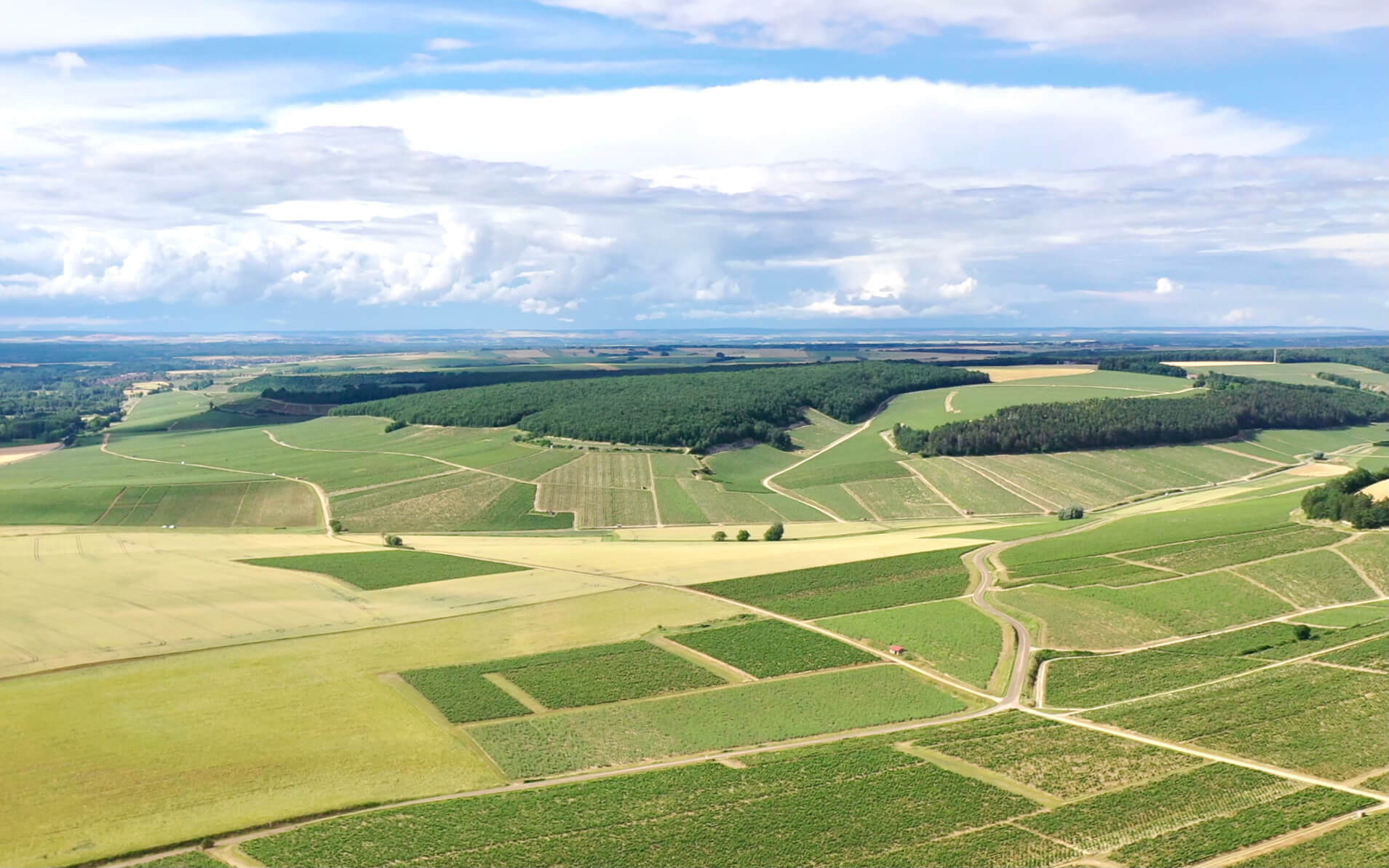
Sebastien Christophe’s 2019 premier crus are finally docking. We thought we’d get them a lot faster after a small batch arrived some months ago, but we decided to hold them to wait for the rest in order to make a proper offer. Sebastien’s Fourchaume vines planted by his uncle in 1981 are located in Côte de Fontenay, a lieu-dit situated on a perfect south face toward the bottom of the hill and next to the property’s dirt road at about 120-130 meters in altitude. This is by far the most muscular premier cru in the range, with an abundance of classic and complex Chablis characteristics.
Located south of the grand crus and the noblest of premier crus, Montée de Tonnerre, is Mont de Milieu, one of the most versatile premier crus in Chablis. Although it’s not much talked about, on that side of the river the slopes clearly have a tremendous amount of the Portlandian limestone that have made their way down the hills and are set in place by the sticky marne (calcium-rich clay) on Kimmeridgian marl bedrock. These soil elements and the south-to-southwest aspects on this side of the Serein River often have greater palate weight and roundness, and fewer intense mineral components than many of those across the river on the left bank, depending on each vineyard. Mont de Milieu has a great range of characteristics that put it in the stylistic center between the right and left bank. Finesse is its main game, but it has plenty of thrust that drives home its complex range of subtleties. Montée de Tonnerre is the flagship wine of Sebastien’s range (the grand crus, Blanchots and Preuses, are on their way soon as well), partly because it’s the most famous premier cru in Chablis, and for good reason. It demonstrates class and balance in every dimension from the acidity, fruit, mineral, seriousness, and pleasure. Sebastien’s parcel is located in the lieu-dit Côte de Bréchains, within the Fyé Valley. Its western aspect and deep marne mixed with Portlandian scree and Kimmeridgian marlstones contribute to its broad range of complexity and appeal. It shares nearly the same south-southwest aspect as most of the grand crus and largely the same soil structure as Les Clos; however, it’s topsoil is not as deep above the bedrock as in Les Clos, though it’s still deeper in most parts than the closest premier cru, Mont de Milieu. (Keep in mind we’re speaking in terms of mere centimeters in difference vis-a-vis topsoil depth.)
Everybody wants Arnaud Lambert’s wines now, but there was a time not too long ago when no one had heard of him, when Brézé was just an obscure name on bottles produced by Clos Rougeard, which were readily available and collecting dust in many wine shops prior to around 2012.
Arnaud and I talk a lot about wine and life. Normally I spend two to four days with him each year in Saumur—sometimes twice a year—and we meet up elsewhere as well. Arnaud is one of our company’s cornerstones. It could even be said that he is our company’s most O.G. producer. Our first contact was in 2010 when we first started The Source, soon after we tasted a few of his wines that he had shipped to our friend’s house in Provence. It was my first “sourcing” trip before I’d purchased a single bottle of wine to import, and I was there with the well-known, former sommelier Tony Cha. I went to France on that first trip with an empty portfolio and came home with thirteen, and Lambert was one of them. I would’ve never guessed that my interest in finding a “clean” Cabernet Franc to import from the Saumur area would lead me to the relatively unknown hill of Brézé and to what seems like the beginning of the redefinition of modern-day, dry Chenin Blanc. Clos Rougeard had their “Brézé” white but it was very rare (and hard as a nail in its youth…), and the rest of the hill had been almost lost to history. There is so much to tell about this chronology, but Arnaud’s entrance into our California market predated Guiberteau by almost two years.
Somehow Arnaud and The Source have been on the same trajectory since our first meeting and we frequently talk about those times. My most vivid memory was of us standing in Clos de la Rue on a very cold day, when for the first time he told me the story of Brézé and the historical crus to which he’d been handed the keys. It was at that moment that I knew I did the right thing by leaving wine production (or at least delaying it for a couple of decades) to become a wine importer. I was so excited by the story that I could hardly contain myself. I wanted to fly home immediately and tell everyone about Brézé’s history, and I did. Of course, it took a few years before we jumped from Arnaud’s basic Saumur white and red into the single-cru wines, starting with the 2012 Clos David and 2012 Clos de la Rue. By the time those cru wines arrived, Guiberteau had already made his mark in the States, I believe his biggest initial splash was in California. And prior to Romain lighting our world on fire with his 2009 Clos des Carmes and 2010 Brézé, no one really gave Saumur white wines much attention; oh, how quickly things can change…
On this container we will finally have our restock of Lambert’s Cremant Rosé and Cremant Blanc. Make sure to lock in what you need because while we have a good chunk to start, it gets dispersed very quickly. The same could be said for the arrival of his entry-level reds, 2020 Saumur-Brézé “Clos Mazurique” (no, Saumur-Brézé is not an official appellation, but it has a nice ring to it, no?) and the 2020 Saumur-Champigny “Les Terres Rouges”.
On the Chenin Blanc front (always an exciting one!), we have some of our “exclusive” bottlings arriving. These are the result of many discussions I’ve had with Arnaud about exploring special plots inside his vineyards to see if there is a notable difference in quality. The deal was that we would taste the wines together each year and decide if they should be bottled or blended into other wines. In any case, I committed to the purchase of these fun and adventurous experiments and now we have four different small production bottlings: Montsoreau, Bonne Nouvelle, Brézé, and a Clos du Midi aged in old French oak casks and bottled in magnum.
Two of those special bottlings have arrived. 2018 Saumur-Brézé “Bonne Nouvelle” and the 2020 Saumur-Brézé Clos du Midi “Special Bottling”, both of which only have two barrels in production—roughly 40 cases of each wine made in total. Our challenge with this bottling of Clos du Midi is that it’s normally bottled in magnums to differentiate it from the normal bottling, but this year he put it in 750mls and put the same label on it, which makes things a little complicated… It comes from further up on the hill inside the Clos du Midi where Arnaud says this section generates more power in its wines. The normal bottling is aged in stainless steel for eight months while this version is raised in neutral barrels for eight months and bottled and stored for six months before release; the difference is striking. The regular Clos du Midi is a fabulous wine with its straight lines, gorgeous mineral nose and easy accessibility, but this version of Clos du Midi has more thrust, slightly softer edges and a deeper core strength.
2019 Saumur-Brézé Clos David is arriving and that should prove to be another knockout for this vineyard. There is also a small reload of the fabulous 2016 Saumur-Brézé Clos de la Rue, which sold out pretty quickly once it was put on the market.
The 2017 Bruno Clair wines are finally arriving after their two-year delay. How fun it is to receive wines from this fabulous estate and this wonderfully fun vintage! It’s good timing for everyone who’s maintained their allocations over the years because the press finally pushed Clair into the upper tier in the recent 2017 vintage blind tasting. “Back to Burgfest: 2017 Reds – Blind” written by Vinous’ Neal Martin, posted on January 18th, and in it, Clair seems to have really stood out among many important producers (around 250 different wines tasted over five days), including the likes of Jean-Marie Fourrier and Armand Rousseau.
Clair’s Clos St.-Jacques received 97 points (and according to Martin, was the top between the five producers—for the second year in a row—who have parcels from this very special vineyard), Bonnes Mares 96 points, and Chambertin Clos-de-Bèze 98 points. Not a bad haul for a blind tasting! While blind tasting has its merits, for me it’s not an end-all be-all judgment. But what can be ascertained from this kind of tasting at this moment is that the wines are showing great now—not surprising for this vintage and not surprising for Clair either: we’ve been beating his drum for years. Most of it has already been allocated, but if you feel you missed the boat, please let us know. We’ll do our best to find some strays.
Our minuscule quantity of 2018 Simon Bize wines is also arriving. These wines are in great shortage for us and will be allocated to those who have a history of following them. Bize did very well in 2018, a vintage that matches this winery’s historical style under the hand and mind of the late Patrick Bize, where structure leads in the wine’s youth and builds to greater complexity and a drinking window that will likely be a few years down the road when compared to their more red-fruited 2017s. I love this domaine and I love the wines every year for the spirit they contain. The versatility of the premier crus of Savigny-les-Beaune makes this appellation one of my favorites and I know no better producer than Simon Bize.

